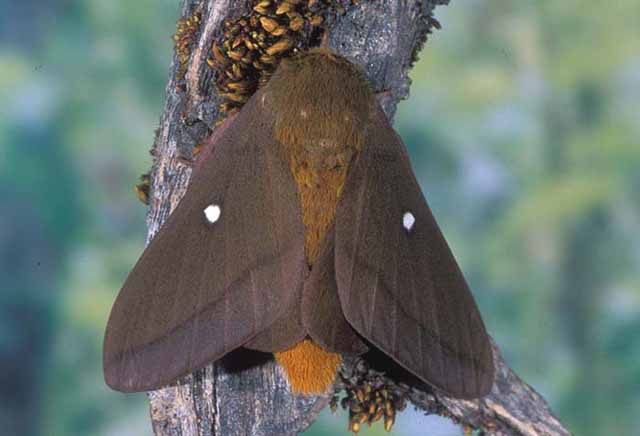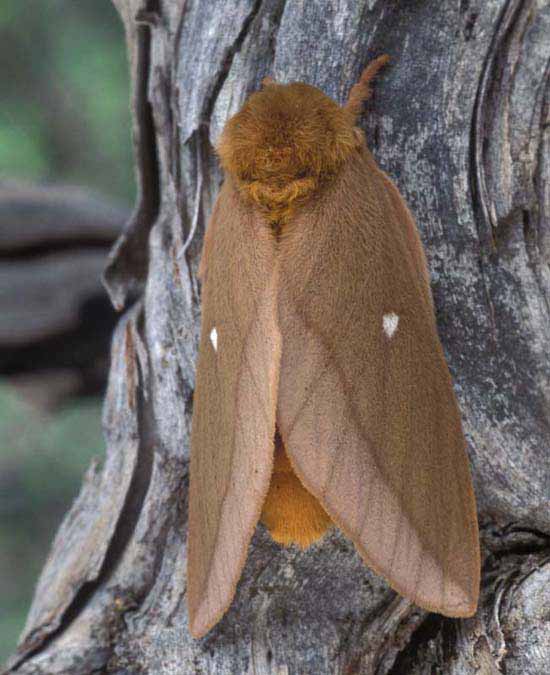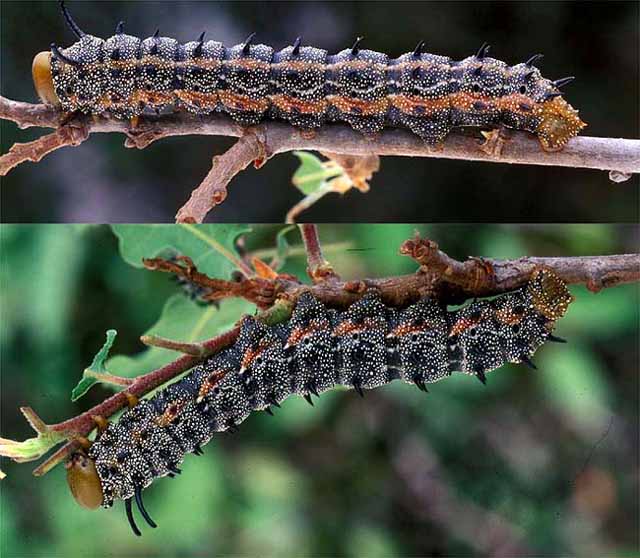Anisota leucostygma
|
|
Updated as per Lemaire's Ceratocampinae 1988, September 28, 2006
|
Anisota leucostygma
an-nih-SOH-tuhmmloo-koh-STIG-muh
(Boisduval, 1872)

Anisota leucostygma male courtesy of Kirby Wolfe copyright.
This site has been created by
Bill Oehlke at oehlkew@islandtelecom.com
Comments, suggestions and/or additional information are welcomed by Bill.
| TAXONOMY:
Superfamily: Bombycoidea, Latreille, 1802
Family Saturniidae Boisduval, [1837] 1834
Subfamily: Ceratocampinae, Harris 1841
Genus: Anisota, Hübner, 1820 ("1816")
Species: leucostygma, (Boisduval, 1872) |
MIDI MUSIC
"What.A.Wonderful.World"
copyright C. Odenkirk
MIDI CITY
ON.OFF
<bgsound src="world.mid" LOOP=FOREVER>
|
DISTRIBUTION:
Anisota leucostygma
(forewing length: males: 21-23mm; females: larger) flies in
Mexico: Oaxaca, and
Guatemala.
The female was described about 150 years ago, and Kirby Wolfe and
Richard Peigler have only recently described (2004) the male and
larvae.
Information on this page is from a SHILAP publication sent to me by
Kirby Wolfe.
FLIGHT TIMES AND PREFERRED FOOD PLANTS:
Moths are on the
wing in September and probably again in February-March under natural
conditions. Lab reared stock from early September deposition emerged
in November, but larvae and pupae had been exposed to much artificial
light.
Anisota leucostygma larvae have been fed upon various oak,
Quercus, species. They have accepted tender leaves of
Quercus lobata (California white Oak) and
Quercus dumosa (California Scrub Oak) in the laboratory.

Anisota leucostygma female courtesy of Kirby Wolfe
copyright.
Females are often lighter than the one depicted above.
ECLOSION, SCENTING AND MATING:
Males are much smaller than females
and use their more highly developed antennae to seek out their mates during the day.
Female Anisota leucostygma have simple antennae. They oviposit at night.
EGGS, LARVAE AND PUPAE:
Translucent yellow eggs are deposited in single layer masses
on host foliage or twigs.
Early instar larvae are gregarious but
divide into smaller groupings as they progress.
Larvae become more solitary as they move into final instar.
Pupation is under the soil.

Anisota leucostygma larvae courtesy of Kirby Wolfe
copyright.
Larval Food Plants
Listed below are primary food plant(s) and alternate food plants listed in
Stephen E. Stone's Foodplants of World Saturniidae and/or from
personal communication. It is hoped that this alphabetical listing
followed by the common name of the foodplant will prove useful. The
list is not exhaustive. Experimenting with closely related foodplants
is worthwhile.
Quercus lobata.......
Quercus dumosa
|
California white Oak
California Scrub Oak
|
The pronunciation of scientific names is
troublesome for many. The "suggestion" at the top of the page is
merely a suggestion. It is based on commonly
accepted English pronunciation of Greek names and/or some
fairly well accepted "rules" for latinized scientific names.
The suggested pronunciations, on this page and on other pages,
are primarily put forward to assist those who hear with internal
ears as they read.
There are many collectors from different countries whose
intonations and accents would be different.
The species name "leucostygma" is for the white
mark in the forewing cell.
I do not know the source of the genus name "Anisota".
Return to Main Index
Return to Anisota Index


